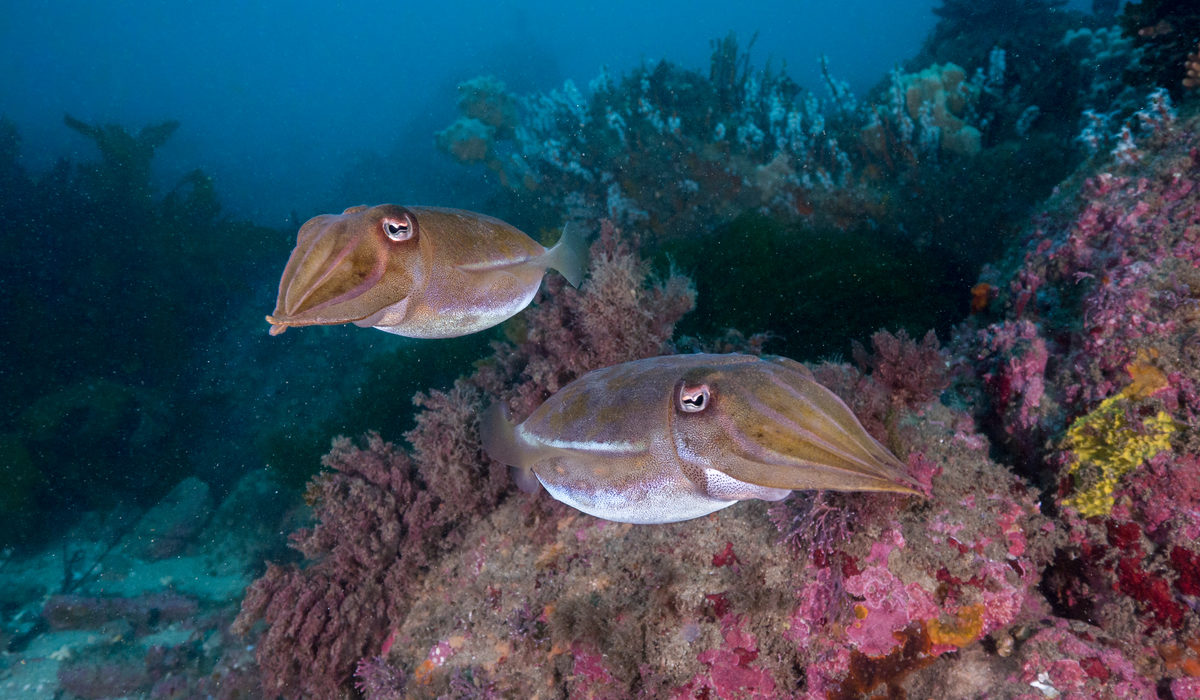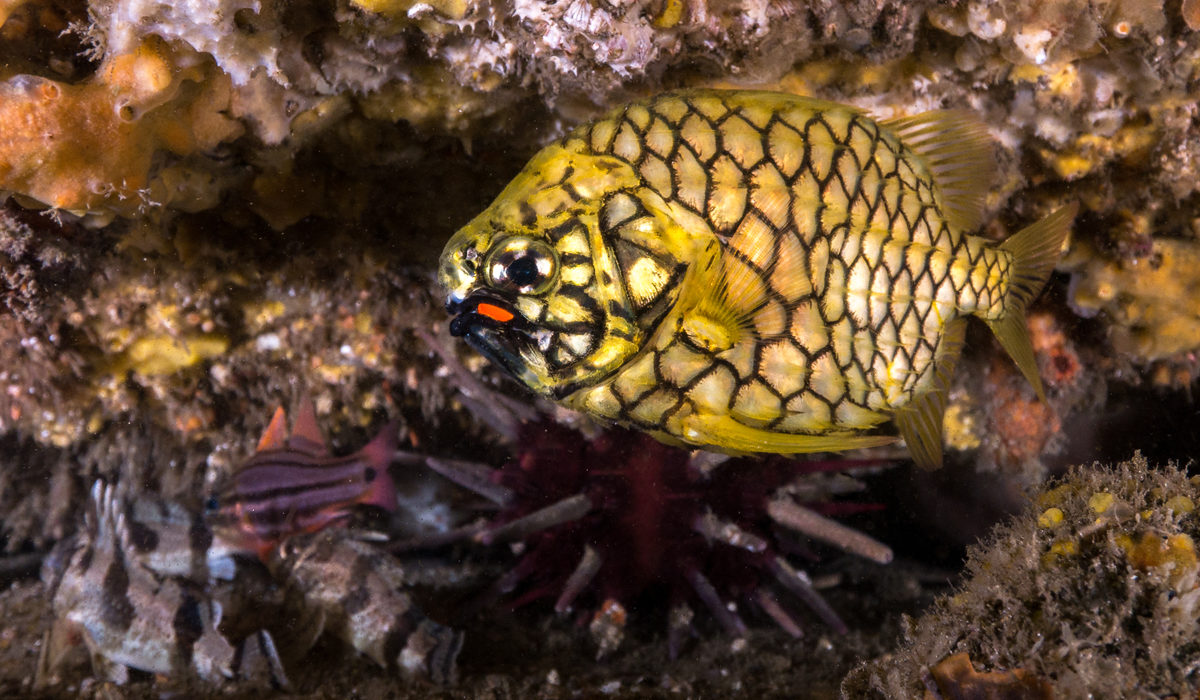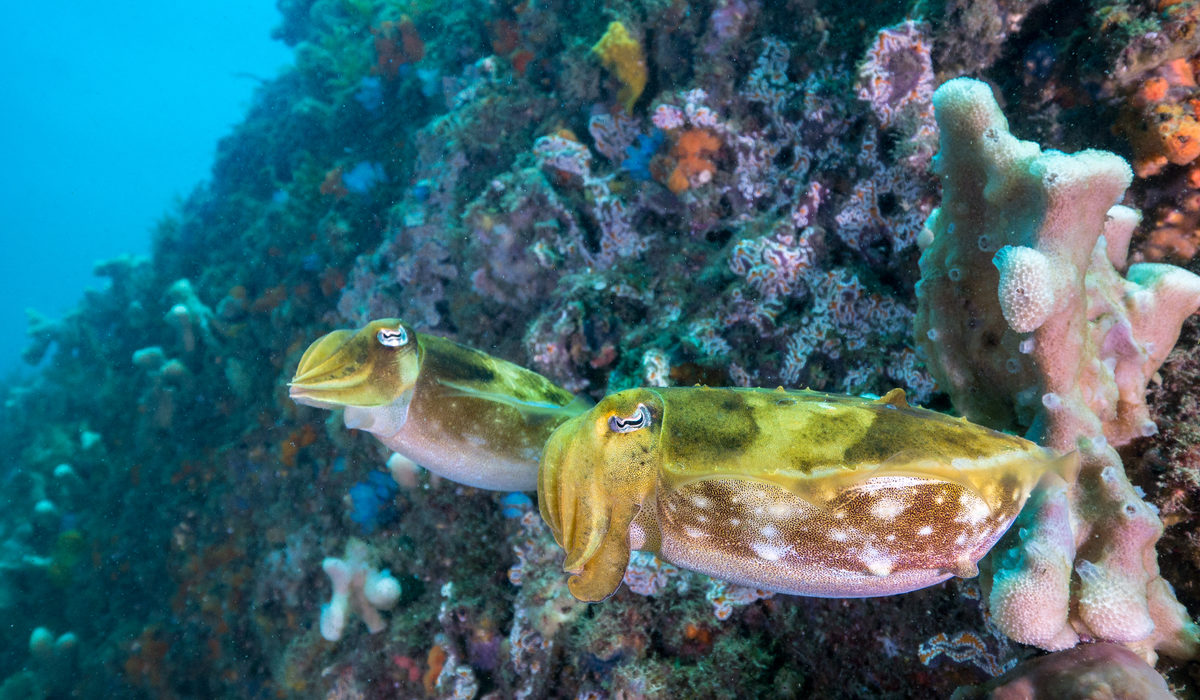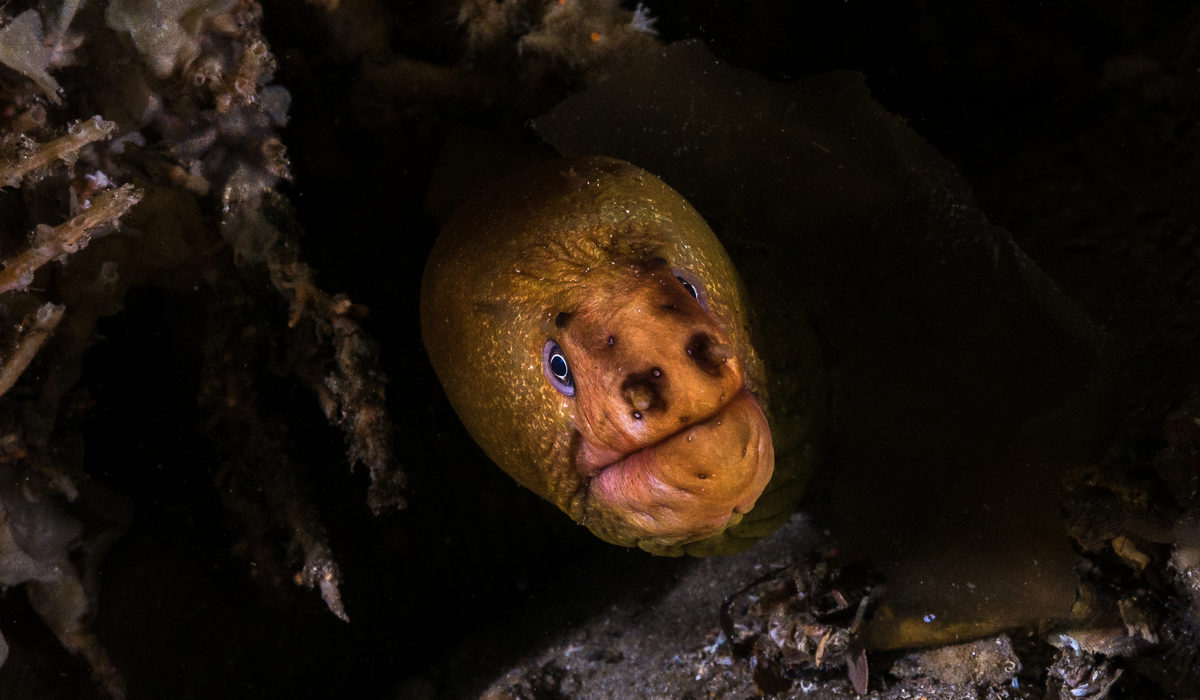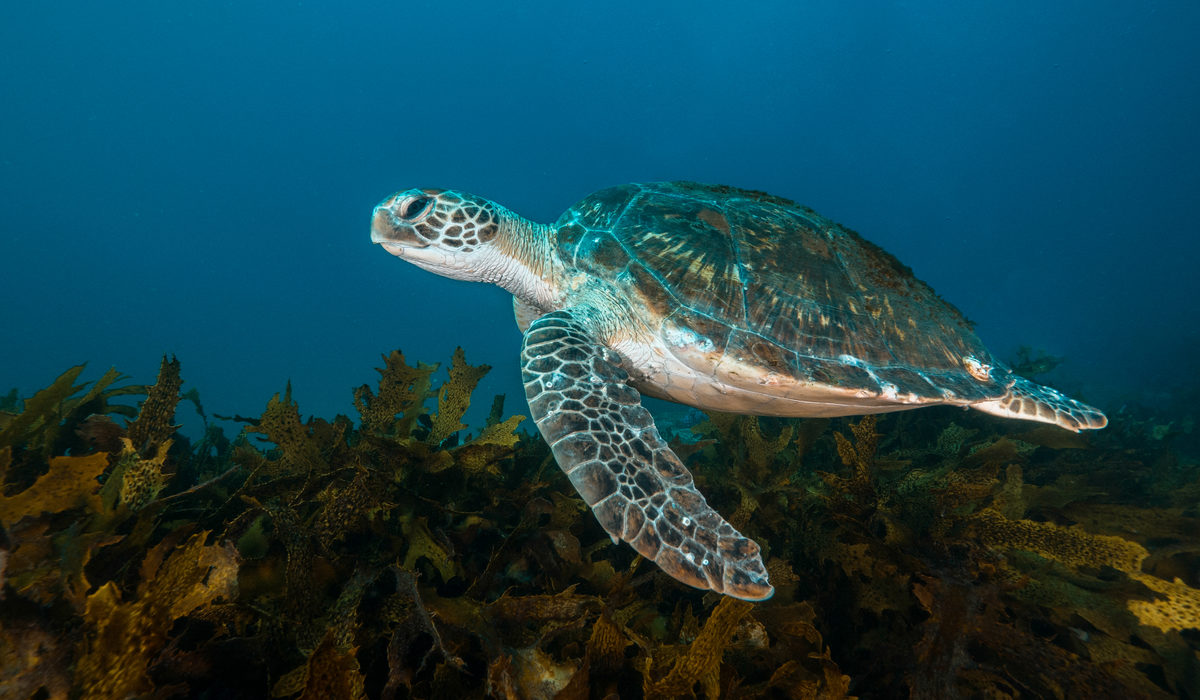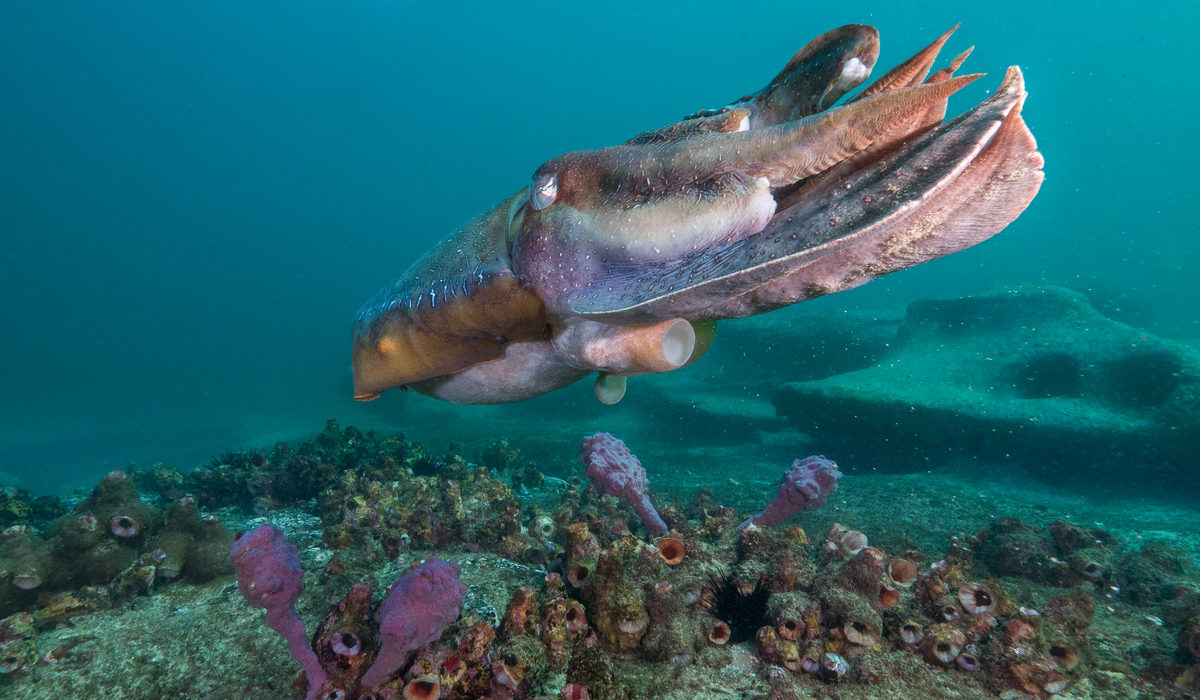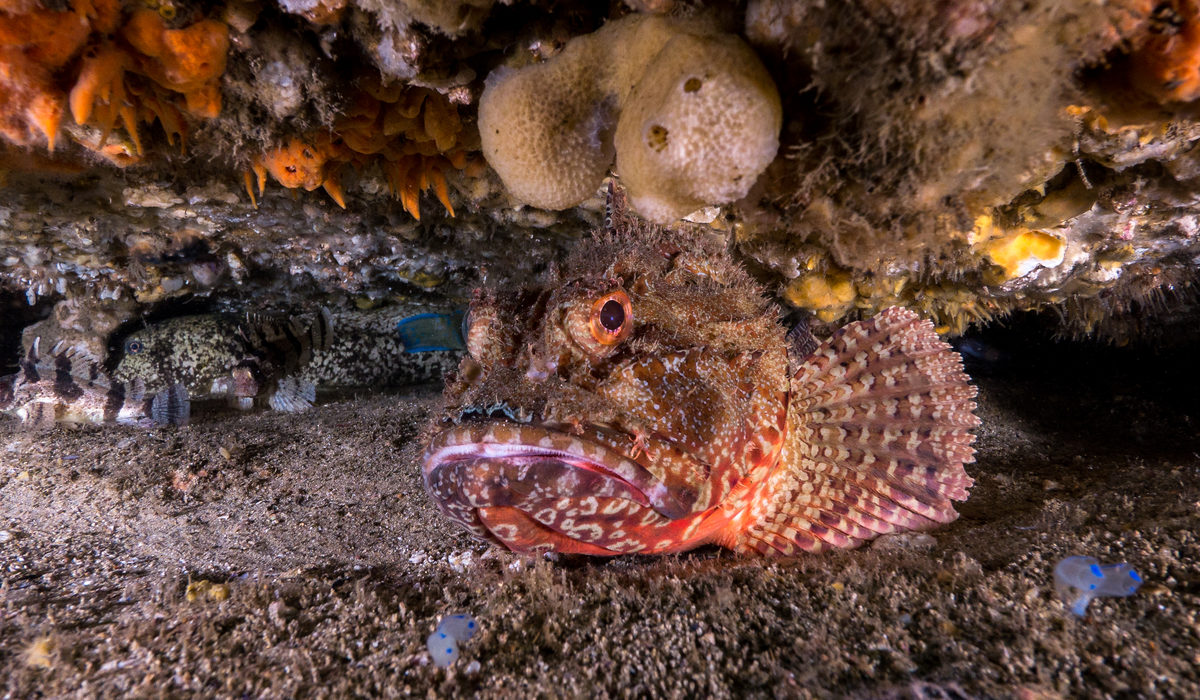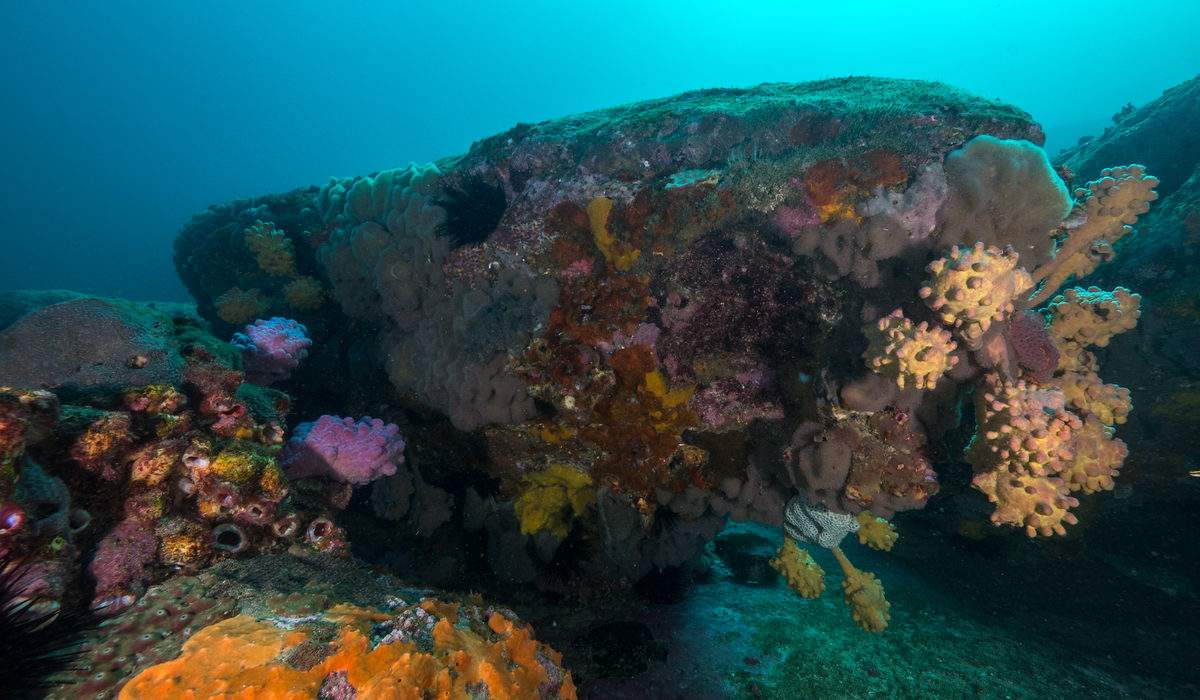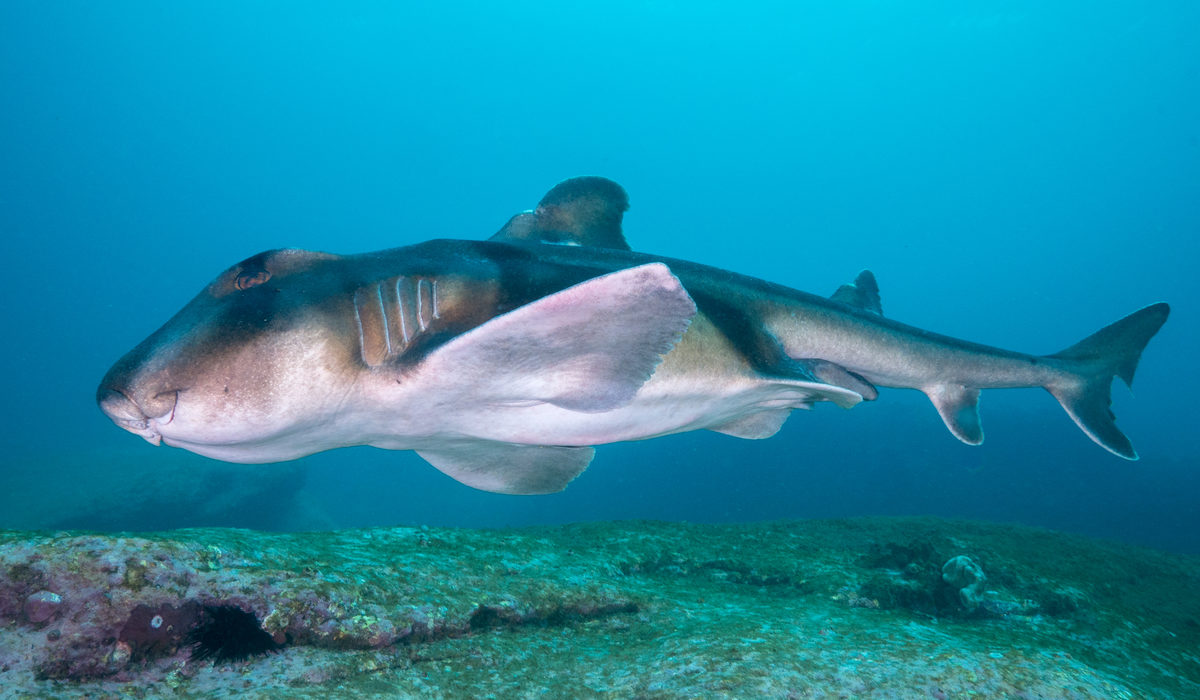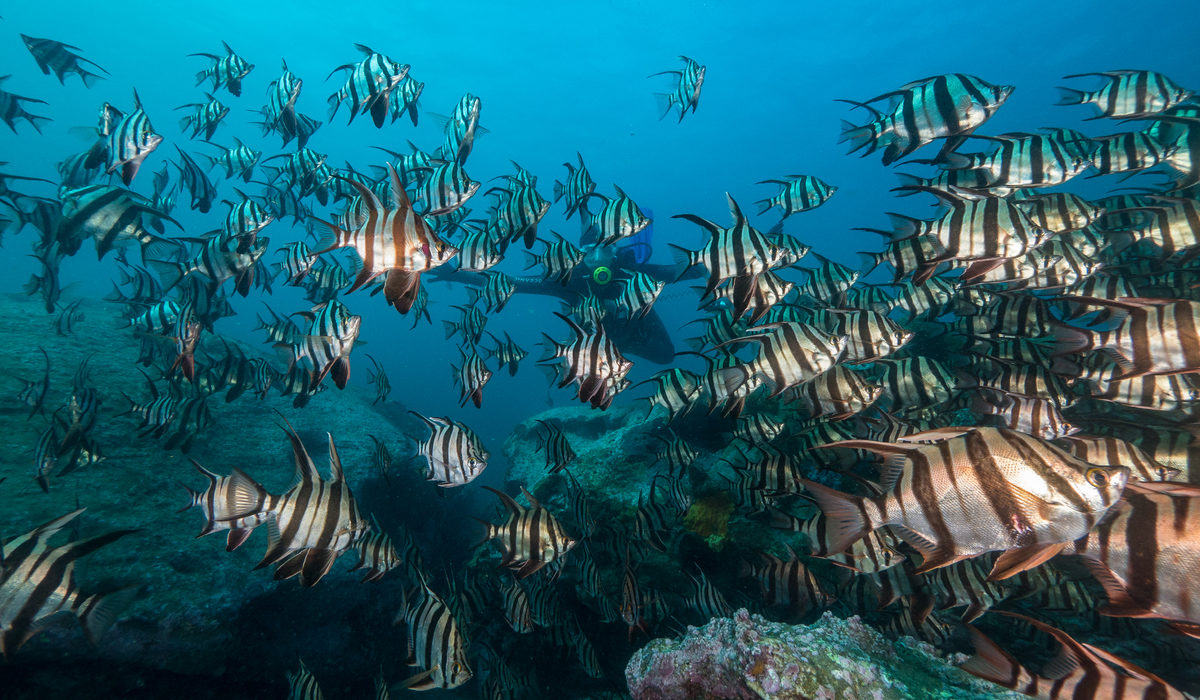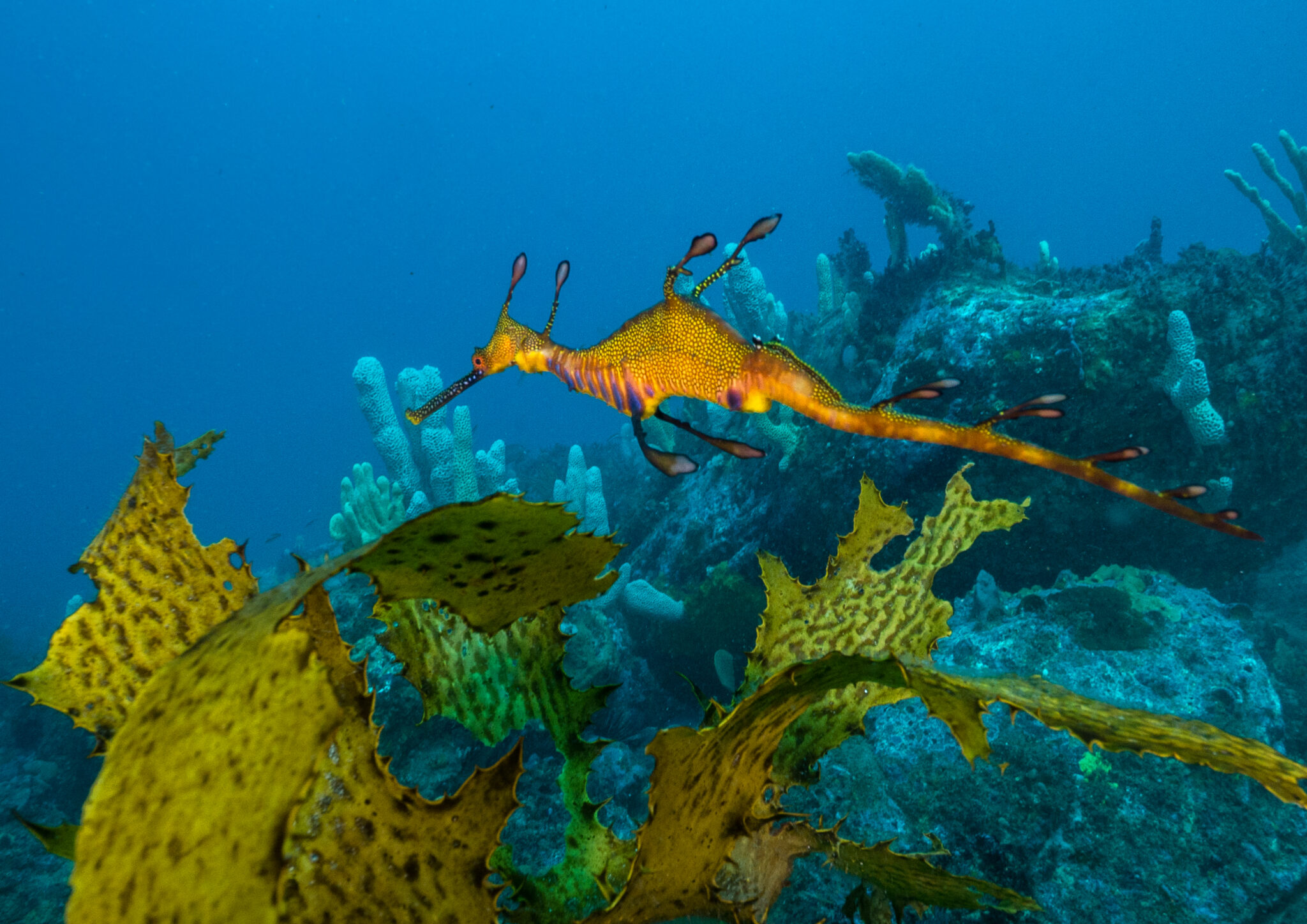
Explore the less-explored underwater wonders, submerge yourself in a vibrant world of untouched corals teeming with marine life, or embark on a quest to spot the elusive Weedy Sea Dragon! The Shire boasts captivating dive sites, making it a premier destination for diving enthusiasts in New South Wales. Whether you’re seeking certification or attempting scuba diving for the first time, the Shire is an excellent locale to obtain your Open Water scuba diving license or experience an introductory scuba dive.
Discover the diverse marine life, intricate corals, and optimal conditions at renowned dive sites such as The Monument and The Steps at Kurnell, Oak Park in Cronulla, and Shiprock in Port Hacking. Detailed descriptions of each site, along with underwater maps, are provided to enhance your underwater exploration. For those yet to obtain certification, valuable information is presented about some of Sydney’s top scuba diving schools, outlining the offerings for prospective divers.
To get a glimpse of the underwater marvels awaiting you in the Sutherland Shire, watch our comprehensive dive overview video.
The Monument & The Steps - Kurnell
The Monument
The dive sites at Kurnell are best known for one thing, Weedy Sea Dragons. These rare animals are only found in limited areas in the southern part of Australia, luckily Kurnell is home to an enormous population of them! Other than an endless number of Weedy Sea Dragons, a wide variety of other marine life is often spotted including: cuttlefish; Bull Rays; Port Jackson and Wobbegong Sharks; Pot Belly Seahorses; octopus; starfish; Crested Weedfish; nudibranchs; and a wide range of fish species. To top all of that off, the entire dive site is lined by some of the most vast and colourful coral gardens seen in NSW. Having dove Sydney’s dive sites for the past 9 years, 5 of which professionally, I can say that this is easily one of my favourite locations to dive in NSW!
This dive site is best dove in a southerly swell when the swell conditions are less than 3 to 4 feet. While it’s an amazing dive site, it’s never fun diving in swell or poor conditions. Having said that, I would avoid this site in northerly swells bigger than 2 to 3 ft. The same can be said for the wind, the site is relatively protected from southerly winds but a medium to strong wind from any other direction can completely blow out the site. For the best visibility it’s always best to dive this site at high tide, or ideally the incoming tide (20 to 30 minutes before the peak of high tide), although this isn’t at all critical.
The entry and exit point at this site is fairly simple. You should park in the carpark marked on the map near the Kurnell Visitors Centre (note as of August 2018 full day parking costs $8 as it is a national park). Once geared up and ready, you should walk towards the ocean, following the tree line on the east side of the park, past the restrooms. Once you get nearer to the ocean, and past the extremely large trees (marked on the map) a small path will trail off to the right. Follow this to the right until you come across a very small beach/ patch of sand. This is your entry and exit point. If there is a large swell I would not recommend attempting to enter the water here, as in swell it can be quite dangerous. (This is why you should check the swell and wind reports before trying to dive!) In small swell this is a very easy entry, here you simply walk into the water and swim over the rocks.
From here the dive site is very hard to miss. Once you have entered the water swim a few meters out and descend. Follow the downward sloping boulders north-east until you hit the wall where you will start to see coral and sponge gardens. Here it should drop off to around 7 to 10 meters. If you keep going deeper you will hit the sea floor and the kelp beds at a depth around 10 to 12 meters. Follow either the wall or the sea floor south-east (or with the wall/sea floor to your right), and do the opposite on the way back. Note: if you hit a large patch of sand where the kelp fades away, you have reached a separate dive site (The Steps) and it’s probably a good idea to turn around as you are quite far from your exit. As an extra point, if you’re running a little low on air after turning around, you can follow the shallow rock platform back to your exit, this is at a depth around 5 to 7 meters.
Now onto the exciting stuff! Where are the Weedy Sea Dragons!? Hint: the answer is in the name. Lining the entire dive site by the sea floor is a strip of kelp, Weedy Sea Dragons live and feed among these kelp beds. The easiest way to find them is to swim along the edge of the kelp (don’t worry you will still have a great view of all the coral gardens), and look not inside the kelp, but on the sand that surrounds the kelp. They hang out on the sandy floor, underneath or around kelp. If you follow the sea floor, and you search around the sandy bottom of the kelp beds you will very likely encounter one of these incredible creatures. You will note on the map there is a large inlet marked ‘Large Kelp Beds’, this is a large area where the coral stops, and it is overtaken by kelp and patchy sand. In short, it’s a Weedy Sea Dragon heaven. Be sure to check the sand around this area for a Weedy! If you’re lucky, this is also how you find Crested Weedfish.
Other than that, you will often see large Bull Rays on the sea floor and cuttlefish or octopus on the rocky bottoms of the coral gardens. Starfish and nudibranchs also cover the rocks surrounding the coral gardens. Pot Belly Seahorses are also often found attached to some of the corals or sponges, they are quite hard to spot but well worth keeping an eye out for! Up in the shallow rock platforms you will find Wobbegong and Port Jackson Sharks, and this is also quite often a good place to spot octopus out and about.
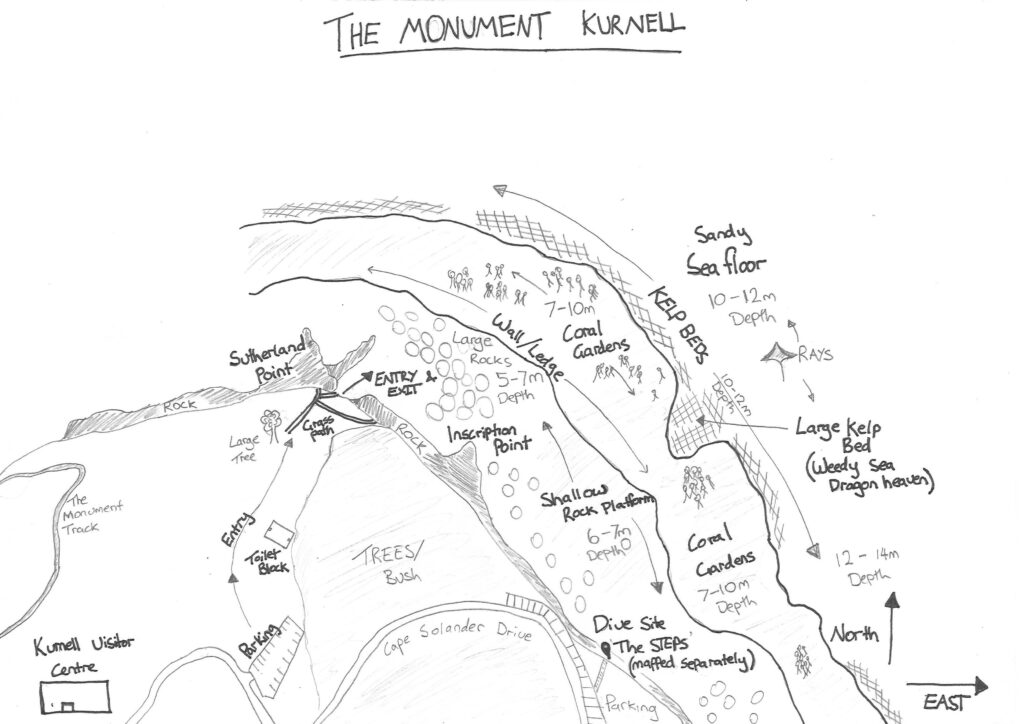
The Steps
As this dive site is very close to The Monument, majority of the information is the same as above. Conditions and wildlife (with the exception of a few key markers I am about to explain) are identical.
For this site you will park on Cape Solander Drive just past the Kurnell Visitors Centre, where the road bends you will see a large carpark (you can even Google Maps ‘The Steps Kurnell’). Similarly to above, as of August 2018 parking costs $8 as it is a national park. Here you will see a very large set of stairs. If you have bad knees I’d recommend diving The Monument instead as the stairs here go on for a fair distance.
The entry and exit point is directly in front of the bottom of the stairs, and it is a small gap in the rocks. Note: if swells are large this entry can be rather difficult (more so than The Monument) so watch it for a minute before entering. From here swim out a few meters and descend, then follow the large boulders down to the wall. If you continue to follow this down you will hit the sea floor, and a large patch of sand. This is your entry and exit cue, on your way back when you hit the large patch of sand (with no kelp) it’s time to surface.
Other than this, the layout of the dive site is unsurprisingly almost identical to The Monument, full of Weedy Sea Dragons and coral gardens. For information on how to find a Sea Dragon, or where other specific marine life hang out see ‘The Monument’ above. Note: there is a large sand/ kelp patch as marked on the map, and this is a common place to spot Weedy Sea Dragons.
The difference between these two sites is purely a matter of personal preference, however this site is quite a few meters deeper than ‘The Monument’ with a maximum depth of around 17 to 18 meters so keep that in mind!
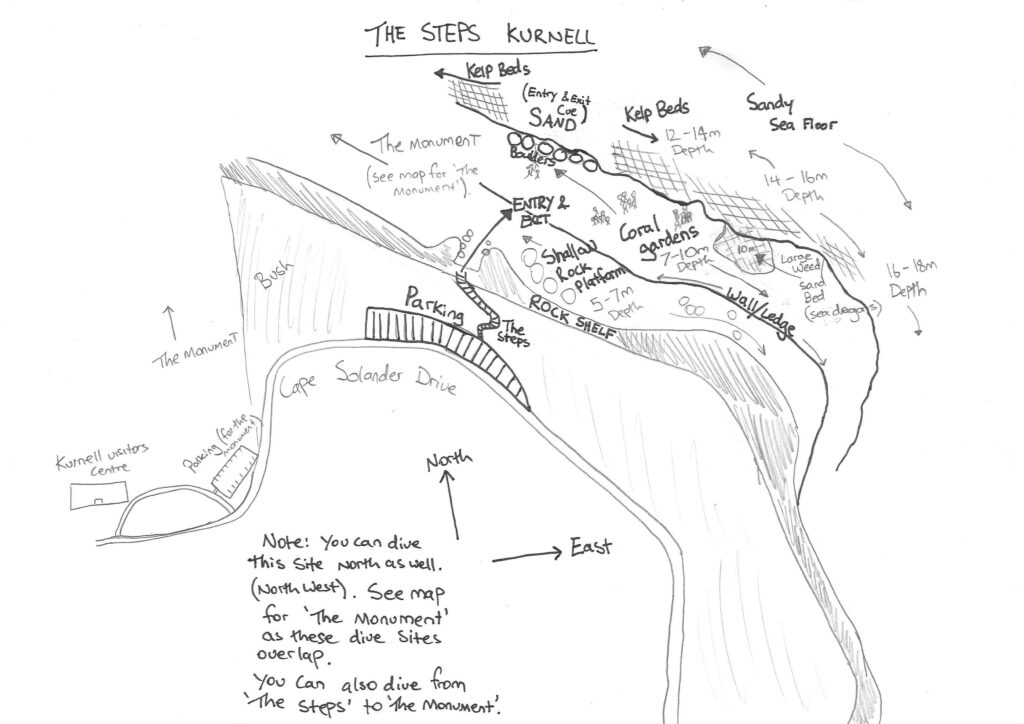
Oak Park - Cronulla
This is another excellent dive site with some pretty substantial coral gardens, and some great wildlife. It’s also a very good beginner dive as it’s very easy to navigate and it doesn’t get too deep! The aid of free parking and a toilet block is also a luxury scuba divers don’t commonly find!
This site can be dove at either high or low tide, and is especially good in southerly swells less than about 3ft. As the site is quite exposed and shallow, avoid diving this site in big swells and especially swells from the north.
There are a number of places around Oak Park Pool where you can enter and exit the water, however the southerly point just next to the edge of the pool is usually the easiest. There may be a few waves rolling in so upon assessing the swell decide what entrance is best for you.
Swim about 15 meters past the edge of the pool and descend down, here you should see a small rock ledge, this is the Wall. Note: that the dive site goes east. That’s right, it runs straight out to sea! This is particularly uncommon, so make sure not to forget otherwise you will end up getting lost. Follow this rock ledge which is about 3 or 4 meters deep to the east, you will know you’re in the right place when you pass a small underwater float. Follow this wall until you reach a large coral garden, here you will find a wide range of fish life, cuttlefish can be found under the rocks, and keep an eye out for a large school of Old Wives that hang out around here. There’s also what appears to be an old motor lodged in an overhang/rock crack here. This is easily the prettiest part of the dive, so spend some time here! Further along, when the wall gets to about 8 meters deep the wall will start to fade and you will start seeing more and more kelp, have a look through these kelp beds for cuttlefish as you swim past. Once the wall has faded, you should start to see a second wall on your right, if not try swimming north-east and you should hit this second reef system. You can follow this to the left or right, however I would recommend keeping the second reef on your right and following that around. Here keep an eye on a few things: 1. Your air – you are likely running extremely low, 2. octopus among the rocks and 3. large schools of fish (particularly if you follow the reef around a fair bit). There is also a small ‘cave’ at the edge of the map marker labeled ‘Rocks’. Once you’re done turn around and head back to the entry/exit point.
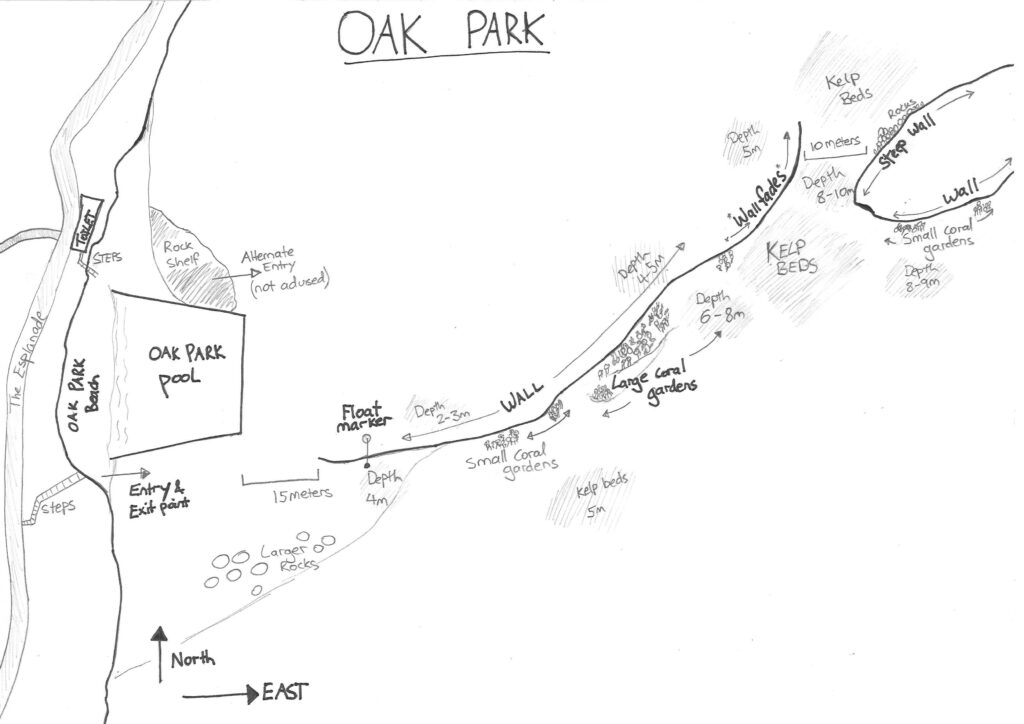
Shiprock - Port Hacking
You’ll see on each of the dive sites listed above that it’s not recommended to dive these during big swells, the best thing about Shiprock is that it’s completely protected! Unlike most of Sydney’s other protected harbour dives, commonly known as ‘muck dives’, Shiprock offers divers a large deep wall lined with an array of vibrant corals and sponges, overhangs, and other swim-through like caverns. In addition to its relatively deep, colourful wall, Shiprock is also home to countless cuttlefish and it is a common site to find the rare Pineapple Fish.
The only constraints on divers are the tides. Now unlike the above sites, you must dive this site on the incoming high tide. That is, you need to enter the water 20 to 30 minutes before high tide. The reason for this is simply the currents that run alongside this dive site. The incoming tide will push you along the length of the wall, and as the tide passes its peak (becomes an outgoing tide) it will push you back towards the entry and exit. If you time this well (it’s really not that hard) you barely have to kick the entire dive, just sit back and ride the currents!
An additional constraint is that boats will be passing overhead. Now this is not an issue, but you must not surface at the deep part of the wall. If you need to surface follow the slope up to the shallows and surface from there. This point can’t be stressed enough, do not surface in deep water. There is a nice slope above the wall so follow that up until you get into shallow water before surfacing.
Once you have walked down the stairs you will see a number of entry points at the bottom of the large rock aptly named ‘Shiprock’. I prefer the larger one labeled on the map, but choose one that works best for you. From here swim a meter or two out and you will see the sand sloping down, descend here and follow the sandy, rocky slope down until you hit the wall. The wall here is around 10 meters deep but it will quickly hit 15 meters. Along the way there are a number of coral covered ledges and sponge covered overhangs. Very close to the entry/exit slope there are a few large boulders around 8 – 10 meters away from the wall that are well worth checking out. There are usually a few cuttlefish hanging around the bottom of these boulders as well as an array of fish life. The boulders themselves are also completely covered in coral. There are also a few smaller coral boulders further along the wall, which are much closer to the wall. As you continue your dive, look out for higher shelves or platforms as these are usually loaded with marine life, small schools of fish and some really pretty corals.
By now you will likely have seen ample cuttlefish, usually in pairs, if not keep an eye on the sand right where the wall meets the sea floor. From around 8 to 5 meters depth you will also notice a range of small to medium cracks in the wall, if you keep an eye inside these cracks there is a decent chance that you will encounter a Pineapple Fish.
By now you also would have noticed that you have swum under a few wharfs, these are easy to notice as they give off a huge shadow, there is one around 10 meters deep, and a second one about 30 meters further along the wall at around 7 to 8 meters deep. When you have passed both of these you are nearing the end of the wall. If you do continue further, at around 5 meters deep where the wall starts to fade you may see what appears to be an old wharf or boat ramp that is submerged and lodged between some rocks. This is the far end of the dive site and if you get this far it’s time to turn around. Head back, find the sandy/ rocky slope just after the wall takes a sharp turn at around 10 meters deep and follow that to the surface.
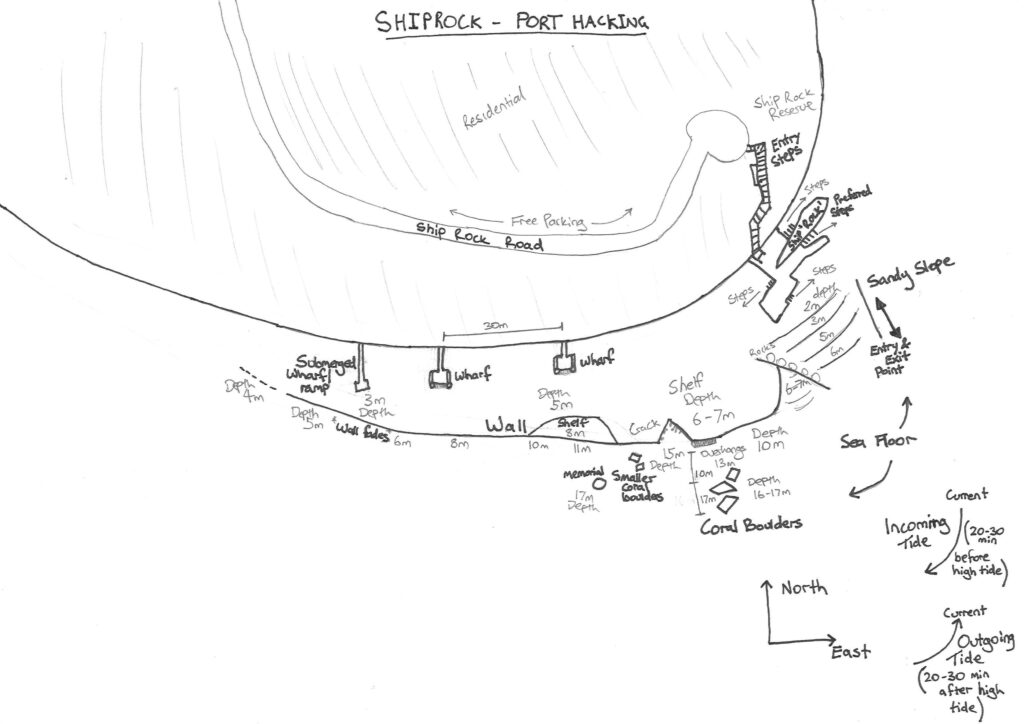
Getting Certified or Trying Diving for the First Time
If you don’t yet hold your scuba diving licence or it’s been a while and you want a refresher, the Shire has some of Sydney’s best scuba diving schools.
Not only will you get world-class training, but you will be diving at some of the best dive sites in the area!
Abyss Scuba Diving is very popular option, for the PADI Open Water course with additional options available should you require a more personalised experience. This is a great option for soon-to-be divers who are feeling a little nervous!
St George Underwater is another great option. The benefit here is also the smaller class sizes that offer more individualized training (classes of 4). St George Underwater also offers an Introductory Scuba Dive package, which is a 4 hour package including some basic training and theory which will prepare you for your very first scuba dive with an Instructor. This is a great way to try scuba diving for the first time, and it’s perfect for those who don’t have the time to complete the full diving license.
